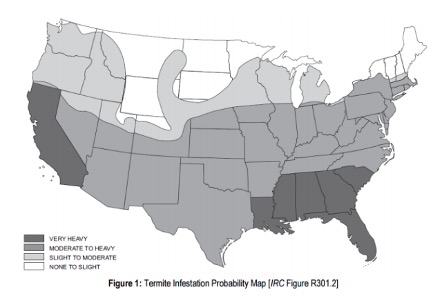We’ve known for a few years now that vinyl siding and other polymeric products wield a multitude of sustainable benefits. Vinyl siding has been an industry leader in its zero-waste manufacturing, resource efficiency, product life cycle and reducing carbon emissions and water use.
Another point-worthy green benefit of vinyl siding that’s often overlooked is NGBS Practice #602.1.6 – its termite-resistant materials.
For the Vinyl Siding Institute (VSI), it’s a badge of honor to visit the Home Innovation Research Labs’ website showing NGBS (National Green Building Standard) point-worthy green building products for NGBS Green Certification – the siding page is filled with VSI members’ products.

The Hard Facts
While you may not find termite resistance as a top-selling point on most VSI member manufacturers’ product marketing, termites actually cause` about $5 billion in property damage every year. Homeowners’ insurance does not typically cover these overwhelming costs. Vinyl siding is designed to last a long time with minimal maintenance, including resisting cracks and warping. Termites – and most insects – have trouble getting through the barrier that vinyl siding provides, and it doesn't act as a food for these destructive insects, thereby making vinyl siding a great cladding to protect against them.
Even better: they offer this protection without using toxic pest control products.
Lab studies on the termite resistance of plastics attribute PVC’s hardness and heavy molecular weight to vinyl siding’s effectiveness at combatting termite infestation. Another variable is its chemical composition.
According to VSI member Alan D. Kupfer of Westlake Chemical Corporation’s PVC Technical Center, “Termites can consume and digest Cellulose and Hemicellulose chemical which make up wood fibers. The PVC chemical structure does not contain these chemicals, so PVC is not a food source for termites.”
USGBC’s Termite Infestation Probability Map shows the heaviest presence of termites in the southeastern states – which are also strong housing markets. And moderate to heavy termite activity covers a large area of mid-Atlantic, Midwest and Southwest, where there is also strong market development potential. One could argue that the green building credits for termite resistance combined with the fact that vinyl siding and related polymeric products provide the best solution for homeowners in these heavy termite infestation areas should be significant selling points in these markets.
One leading cement fiberboard competitor promotes a termite maintenance guide to position itself as a leader in termite resistance. Termites may not be able to chew through this product, but because cement fiberboard is difficult to install and absorbs moisture, termite infestation into the home is still possible.
VSI members do boast having the NGBS certifications for their products, or will emphasize “rot free, moisture and termite-proof material” or “superior termite protection” as benefits of vinyl siding.
Yet the question remains: can we do more as an industry to promote vinyl siding’s superior termite-resistant qualities in markets that have the most housing starts and also have the highest risk for termite damage?
_________________________________________________________________________________________________________________________
Don Browne is a writer, entrepreneur and local legislator who believes that the power of words can change the world. He provides unique writing services for clients in the construction, health care, IT and hospitality sectors. He has a passion for small business and start-ups, as well as writing about Irish history, family and corporate biographies. As a homeowner and father of four who is passionate about community development, Don looks forward to writing more about the exciting possibilities of creating traditional neighborhoods and more sustainable communities using modern materials.